 |
Creating Customer Satisfaction for 37 Years! |
|
|
|
|
|||
|
|
|||
installation information and drawing details for twinwall,
triplewall & multiwall polycarbonate panels
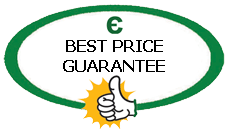
 |
 |
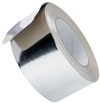 |
 |
 |
 |
 |
 |
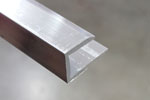 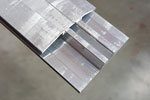 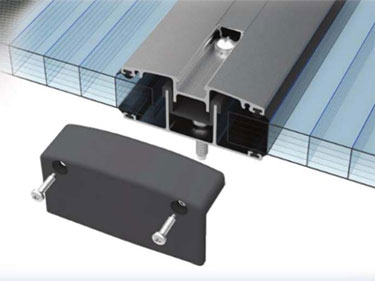 |
| MULTIWALL | FASTENERS | TAPE | QUOTES | INSTALLATION ? | SHIPPING COSTS | RIDGE CAPS | POLY CHANNEL | ALUMINUM CHANNEL |
INSTALLATION INFORMATION AND DRAWING DETAILS FOR
POLYCARBOANTE TWINWALL, TRIPLEWALL & MULTIWALL PANELS
CLICK ON BUTTONS BELOW FOR DETAILED INFORMATION ABOUT THE SUBJECT
|
|
|
|
|
|
|
|
|
|
|
|
|
|
|
|
|
Frequently Asked Questions |
|
Q. What colors are polycarbonate sheets available?
Q. What is the longest length polycarbonate sheet in stock?
Q. How wide are the sheets AmeriLux stocks?
Q. How will the polycarbonate panels be shipped?
Q. What carrier do you use for shipping your panels?
Q. How are multiwall panels cut?
Q. How do you cut corrugated polycarbonate sheets?
Q: What is the difference between “corrugated polycarbonate” and
“multiwall polycarbonate” sheet profiles?
Q. What type of screw should I use when installing polycarbonate
panels?
Q. Do I need to use a washer with the screws?
Q. What type of sealant should be used on sheets?
Q. What are polycarbonate H- and U-Channels used for?
Q. How can I get my H- or U-Channel to slide onto the sheet?
Q. Can panels be nailed into place instead of screwing?
Q. Is it necessary to pre-drill holes before installing
polycarbonate sheets?
Q. Are there any products that can help keep heat out?
A. All of AmeriLux sheets are UV protected however that does mean all sheets will block heat equally. Clear panels will a
Q. How do you clean polycarbonate sheets?
Q. Can you walk on polycarbonate sheets during installation?
Q: What is the difference between direct light and diffused light?
A: Direct light is intense, bright light coming from a single source
one direction. Direct light creates sharp defined, deep shadows and
flattens out three-dimensional detail. Diffused light is a soft
light with neither the intensity nor the glare of direct light.
Scattering in many different directions, diffused light is spread
over and reflected around objects, and does not cast harsh shadows.
Q. What is the better polycarbonate choice for a hobby greenhouse:
Multiwall or Corrugated Polycarbonate?
Q: What is LEED?
Q. Do I need special tools to install TRUSSCORE™ Liner Panels?
Q. Are multiwall polycarbonate panels strong?
A. Yes, multiwall polycarbonate is a lightweight yet extremely durable and impact resistant
plastic. Multiwall panels are 10 times stronger than acrylic and 200
times stronger than glass. The UV-protected surface helps maintain
the panel’s clarity and mechanical properties, offering superior
weatherability. Virtually unbreakable, multiwall polycarbonate is a
versatile solution for a variety of glazing applications.
Q. What can I use to cover the gap at the peak of a post frame
building?
Q. What is a LEXAPANEL™ Standing Seam Panel?
Q. What is the minimum square footage for ordering LEXAN™
THERMOCLICK™ in special colors?
Q. Which of your products would you recommend for the interior walls
and ceilings of a garage?
Q. Why is there film on the polycarbonate sheets?
Q: Should I remove the masking film before cutting a polycarbonate
sheet?
Q. What can I do if the film is stuck to the polycarbonate sheet?
Q. Where can polycarbonate sheets be purchased?
Q. How do I clean out the debris from the interior walls "flutes" of
a multiwall sheet?
Q: Do I need to be concerned about thermal expansion and contraction
when installing my polycarbonate panels?
A: Most Definitely! Polycarbonate panels will expand and contract
due to changes in temperature. Polycarbonate expands in hot weather
and contracts in cold. Figure about 1/32" per foot for 100º of
temperature change with the greatest amount of expansion and
contraction occurring during the Spring and Fall months. Fastener
holes must be oversized to allow for this thermal movement.
Q: What is a daylighting system?
A: In structures, daylighting refers to the controlled admission of
natural light into a building to illuminate the interior space. The
best daylighting systems provide natural light without glare,
delivering visual comfort and well-being. Daylighting systems
promote green building design and can be divided into two main
categories: top lighting and side lighting. Skylights and
translucent curtain walls are examples of daylighting systems.
Q: What is Lumira® aerogel?
A: A dry silica particulate, Lumira® aerogel is a completely
recyclable, lightweight insulation that repels water and retains its
properties under compression. Aerogel particles deliver superior
thermal insulation and light diffusion. Cradle-to-Cradle certified,
Lumira® aerogel is designed to optimize light transmission in
daylighting applications.
Lumira® aerogel is produced by the Cabot Corporation at its
state-of-the-art manufacturing facility located near Frankfurt,
Germany.
Q. What are the benefits to filling polycarbonate multiwall panels
with Lumira® aerogel?
A. Multiwall polycarbonate daylighting systems are greatly enhanced
by the inclusion of Lumira® aerogel. Lumira® aerogel increases the
insulation factor, provides superior light diffusion, improves
acoustic performance, reduces solar heat gain/loss, and decreases
energy consumption.
Q: How thick is a corrugated polycarbonate sheet?
A: CoverLite® MR9” and MR12” corrugated polycarbonate sheets are
.035 inches thick. LEXAN™ Greca (square wave) corrugated sheets are
.033 inches thick. Corrugated polycarbonate panels make excellent
coverings for a patio, deck, or greenhouse, allowing filtered light
through while providing protection from the elements.
Q: Why is an anti-condensate feature important when choosing a
greenhouse covering?
A: Condensation on the inner surface of a greenhouse covering
reduces light transmission and increases the risk of disease. An
anti-drip or anti-condensate coating reduces surface tension,
encouraging water to condense not as droplets but as a thin layer.
This condensation layer is diverted down the sides of the greenhouse
instead of dripping onto plants. Benefits include fewer diseases,
reduced need for pesticides, and higher quality plants.
Q: How to store and handle Polycarbonate and PVC panels during the
winter months?
A: Polycarbonate and PVC panels can be stored outside temporarily
in the rain or snow. Stack sheets on a raised platform protected
from the wind. Even though the sun’s strength decreases during the
winter, do not expose stacked sheets to direct sunlight. Cover
with an opaque, protective material. Covering the polycarbonate
sheets will also prevent dirt and debris from entering the flutes.
Ideally, panels should be stored in a dry, well-ventilated, shaded
area. Prior to installation, bring the Polycarbonate and/or PVC
panels inside, lay flat (uncovered), and allow the sheets to
acclimate to the temperature of the room where they will be
installed or in a room with the same climate conditions for a period
of at least 48 hours.
Q: What are closure strips?
A: Typically made of foam or plastic, closure strips are designed
with a profile that matches the configuration of a corrugated panel.
Closure strips seal the opening created where the corrugated
polycarbonate sheet meets a flat surface, filling the gap in
corrugated roofing and sidewall applications. Closure strips provide
a finished, professional appearance and increase the
weather-tightness of polycarbonate corrugated panels by preventing
moisture, insects, and debris from getting under the panels.
Q: Can Polycarbonate or PVC be recycled?
A: Yes, Polycarbonate and PVC are recyclable materials. When
possible, recycling is preferred to disposal or incineration.
Landfill or incinerate in accordance with federal, state, and local
requirements. Collected processing fume condensates and incinerator
ash should be tested to determine waste classification. The information provided on this webpage is only a general guideline. Exact requirements are project specific. |
![]()
![]()
![]()
![]()
| Copyright 2019, All Rights Reserved Including Page and Website "Look & Feel" |
Greenhouses Etcetera
"an EncepCo Company"
![]()

PO BOX 914
Benton City, WA 99320
toll free 1-888-966-7877